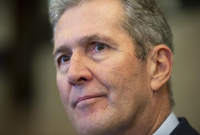Support strong Canadian climate journalism for 2025
The Manitoba government has decided to not appeal a court ruling that said the federal government has a right to impose a carbon price on provinces.
Instead, Premier Heather Stefanson is hoping for a more amicable negotiation with Ottawa than her predecessor, Brian Pallister.
"This is an opportunity, I think, for us to press reset with the federal government and have more of a collaborative relationship with them," Stefanson said Wednesday.
"From the conversations that I've had so far with the prime minister, I'm cautiously optimistic that we'll be able to come to some deal that will be obviously in the best interest of Manitobans."
Pallister planned in 2018 to have a flat $25 per tonne price on carbon. That was lower than the minimum escalating level set by the federal government, but Pallister said Manitoba deserved credit for billions of dollars spent on clean hydroelectric projects, which utility customers continue to pay for.
Pallister said Manitoba's emissions plan, which included wetlands improvements and subsidies for fuel efficiency in the trucking industry, could meet or exceed federal emission targets without imposing a high carbon tax.
Ottawa brought in a "backstop'" carbon price on provinces that did not meet its demands, and promised to return the money, mainly to individuals through income tax rebates.
Manitoba took the issue to Federal Court and lost last month.
Stefanson did not provide any indication that Ottawa has softened its demand or agreed to give Manitoba a discount for its energy development.
"I think that those discussions are ongoing. I'm not going to reveal that right now."
Opposition NDP Leader Wab Kinew said Manitoba should reach a deal with Ottawa and come up with its own carbon-pricing plan.
"Spending money on pointless court battles is not doing anything to solve the climate crisis," he said.
Canada's carbon price started in 2019 at $20 a tonne and is set to rise to $170 a tonne by 2030. The current price of $40 a tonne adds about 8.8 cents a litre to gasoline, or about $3.50 more to a 40-litre fill-up of a car.
This report by The Canadian Press was first published Nov. 17, 2021.





Comments